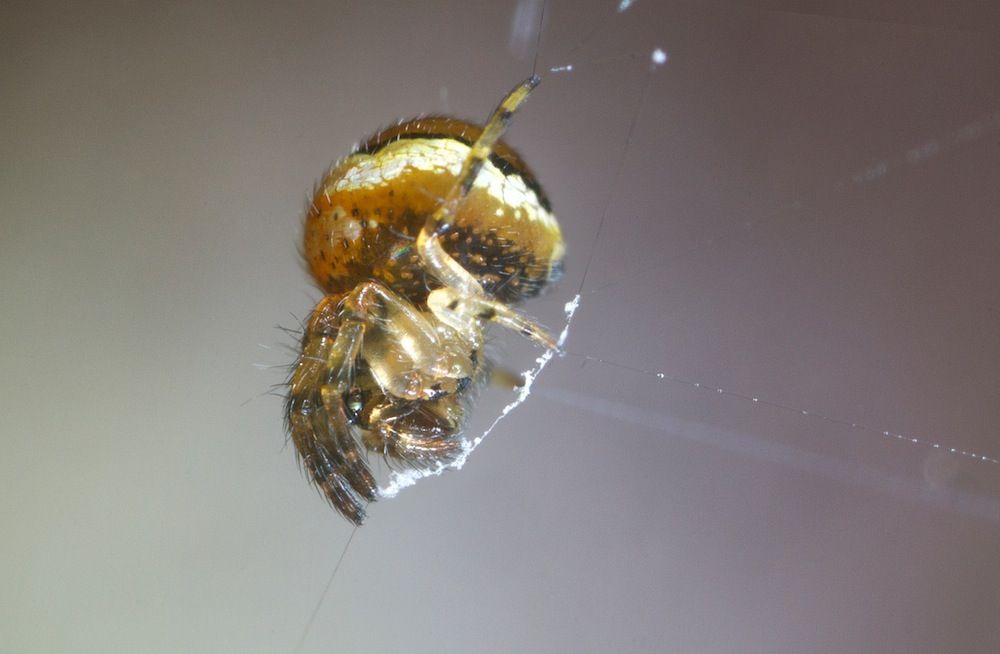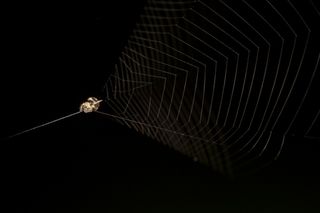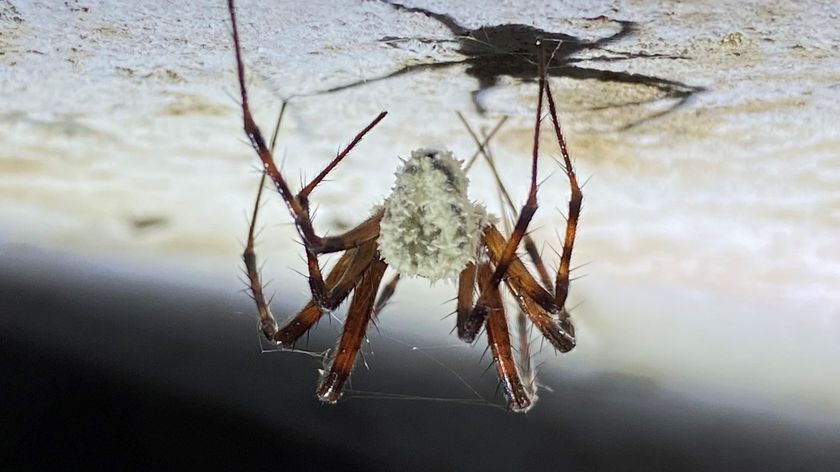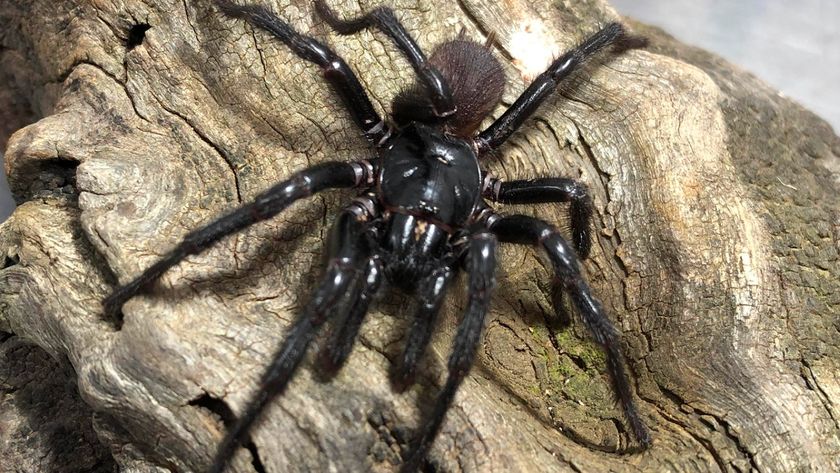
A new video has captured the remarkable tactic a tiny spider uses to catch insects: It uses its web as a slingshot to fling itself and the web at unsuspecting prey.
The video of the bizarre Amazonian spider was posted to YouTube on Jan. 8 and has garnered more than 250,000 views so far.
Georgia Institute of Technology graduate student Troy Alexander first noticed the unusual spider acrobatics at the Tambopata Research Center, an Amazon jungle lodge in Peru.
The tiny spider, which measures no more than 0.1 inch (3 millimeters) across, belongs to the family Theridiosomatidae, commonly known as Ray spiders. [In Photos: Spiders Hatched from Web Towers]
Though the spider family was identified about 80 years ago, very little is known about these tiny critters. The team thinks the particular spider may be the species Naatlo splendida but needs to collect specimens to be sure, Phil Torres, a Rice University ecology graduate student who has documented the spider's behavior, wrote in an email.
Spider acrobat
The miniscule spider builds a fairly ordinary web, about the size of the palm of a human hand. But in the middle, it creates a silk drawstring that it affixes to a nearby solid surface, but bunches up in the terminal hooks on its legs to pull the web off-center into a cone shape. The tiny hunter waits until it somehow senses the approaching bugs, and then releases the drawstring.
Sign up for the Live Science daily newsletter now
Get the world’s most fascinating discoveries delivered straight to your inbox.
"The web goes flying, and so does Mr. Spider," said Jeff Cremer, the photographer who captured the spider's daredevil move. The flying web makes it much more likely that the hapless bug will become entangled in the silky lure.
The surprise attack works because the tension developed in the web is enough to launch the whole ensemble with high acceleration. (The hardy spiders aren't fazed by the speed.)
Other weird webs
The tactic may ensure that the webs can entangle even slow-flying insects such as mosquitoes, one of the spiders' preferred prey. Most spiders rely on the stickiness of their webs to trap flying insects, but at low speeds, the force of impact may not be enough to entrap the bugs.
"This method of flinging the web appears to make it much more likely that the prey will get tangled, as they seem to be getting slammed into its sticky web regardless of the prey's original flight speed," Torres said.

The spider isn't looking at the prey when it releases its lure, so the researchers think the spider is waiting to sense the vibrations of the bug's wing beats, Cremer told LiveScience.
This isn't the only unusual method spiders use to attract prey. Some spiders create charged webs that suck prey in using electrostatic attraction. Others weave elaborate ladderlike webs.
Follow Tia Ghose on Twitter and Google+. Follow LiveScience @livescience, Facebook & Google+. Original article on LiveScience.

Tia is the managing editor and was previously a senior writer for Live Science. Her work has appeared in Scientific American, Wired.com and other outlets. She holds a master's degree in bioengineering from the University of Washington, a graduate certificate in science writing from UC Santa Cruz and a bachelor's degree in mechanical engineering from the University of Texas at Austin. Tia was part of a team at the Milwaukee Journal Sentinel that published the Empty Cradles series on preterm births, which won multiple awards, including the 2012 Casey Medal for Meritorious Journalism.











